
In the Name of Our Ancestors
Against the odds, indigenous activists take on an international coal mining firm.

A version of this story ran in the June 2016 issue.
Last December, Juan Mancias, a Carrizo indigenous organizer, wrote a letter to the Railroad Commission of Texas demanding to know why a coal mining company had been permitted to start digging up land rich with indigenous artifacts, including human remains. The response gave him ammunition for his longtime struggle against the Mexican-owned Dos Republicas Coal Partnership. The Railroad Commission’s letter acknowledged that the mining area — 6,346 acres just outside Eagle Pass where mining had started in September — contains 14 sites that appear to be significant enough to require federal protection. The commission insisted that Dos Republicas would not disturb the sites unless they were deemed ineligible. But in response to Mancias’ question about who would oversee potentially destructive mining activities, the commission said there is no single “watchdog” and that such projects don’t require one.
A few months later — in a letter to Mancias’ sister, Julia-Donnie Blackowl — the commission acknowledged that the Eagle Pass mining site does contain human remains as well as “hunting camps containing burned rock scatters, oven sites … and hunting-related stone artifacts.”
The letters infuriated Mancias: The commisson had given Dos Republicas the go-ahead to mine the site, even while acknowledging its archeological significance. By then, the company had been unearthing coal from the mine’s sun-bleached soil for nearly three months. A few weeks after the mine opened, when the area was hit by record floods, the water in Elm Creek ran black, presumably because of runoff from the mine.
“It was time to put a little fire underneath everybody,” Mancias said.
In April, he helped organize a march that brought together 200 activists from a dozen tribes across the country, including the Comanches, Apaches, the American Indian Movement and the Brown Berets, a Chicano activist group formed in the 1960s. Environmental activists, including Eagle Pass residents, joined in.
It wasn’t the first time that people have come together to stop Dos Republicas. The fight against the mine has gone on for more than 20 years, yet the firm, a U.S. subsidiary of a Mexico City steel and mining giant, has prevailed, winning its appeals to Texas agencies for permits.
Mancias is not giving up, and neither are his allies. Leverage can still be exerted through pending court cases, including one that may be heard by the Texas Supreme Court. “We just need to hit them from all sides, because they’re wrong in what they’re doing,” said Mancias, a tall, sturdy man with dark hair that falls past his shoulders. “They have totally ignored who we are and they’ve taken advantage of the things that they’ve found there. Whether they’re Carrizo or not, they’re still human remains that need to be dealt with.”
If all else fails, Mancias reasons, they can camp outside the entrance to the coal mine off of County Road 305, and become a human surveillance system.
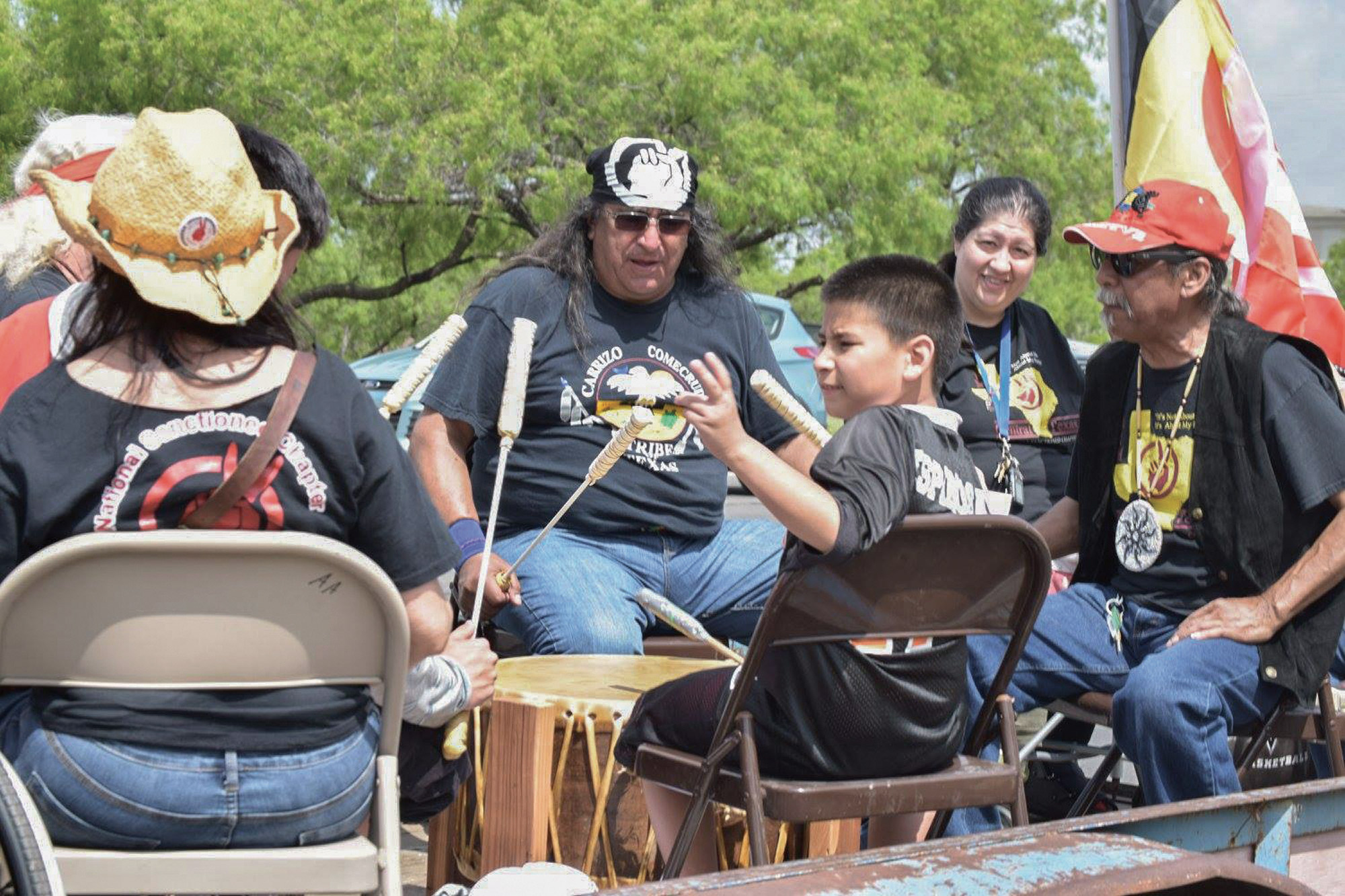
Dos Republicas’ determination to mine Eagle Pass is a bit of a head-scratcher. It just doesn’t make economic sense, says Eagle Pass resident George Baxter, who, with his wife Martha, has led the environmental protest against the mine for the past several years. He carries a laminated map of the mine’s permit areas, which shows the changes Dos Republicas has made in its permit applications to the Railroad Commission.
“The protesters, they were the motivators, making us more strong as we were walking where our ancestors did.”
Baxter has done the math. “It’s got to cost more, and the coal is inferior,” he said. “So what economic sense does that make? We can’t figure it out.”
Along with economic challenges, Dos Republicas has faced years of dogged resistance, tangling with lawsuits and permit hearings. “We’ve been through a lengthy and thorough process with the Texas Railroad Commission,” said Rudy Rodriguez, spokesperson for Dos Republicas. “It’s been open to the public. We’ve been through many hearings and had many experts in testimony.”
Protest against the mine coalesced in a formal petition filed by the Kickapoo, a federally recognized indigenous tribe with bands in Texas, Kansas and Oklahoma. Though the Kickapoo originated in the Great Lakes region, their government-sanctioned land is in Maverick County, where most of their 600 members live on a 125-acre reservation. The Kickapoo asked for a hearing of Dos Republicas’ request to the Railroad Commission for a permit that would allow the company to double the size of the mining area.
By that time, the Baxters were organizing neighbors and friends to oppose the mine for environmental reasons. The rates of adult asthma in Maverick County are already among the highest in the state, and many residents worry that coal dust and debris will exacerbate pollution-related health problems. The Baxters, who formed a citizens’ group, the Maverick County Environmental and Public Health Association, collected signatures from 8,100 county residents — about one of every seven — to back the Kickapoos’ call for a hearing.
Then in May 2012, the Kickapoo abruptly and inexplicably pulled out. Elizabeth Burkhardt, a lawyer then retained by the Kickapoo, told the Observer she was never informed why the five-member tribal council withdrew its opposition. Citing attorney-client privilege, she declined to discuss the case further. The only glimpse of an answer came from the Eagle Pass Business Journal, which reported that just before pulling out, Kickapoo members met in secret with Dos Republicas representatives.
In early 2013, less than a year after the Kickapoo withdrew, the Railroad Commission awarded Dos Republicas a permit for the mine area expansion. It passed on a 2-1 vote, with Chairman David Porter opposed.
Both Eagle Pass and Maverick County have appealed the permit all the way to the Texas Supreme Court. The court has yet to announce whether it will hear the case. But an attorney for the county, David Frederick, said the court has asked the Railroad Commission and Dos Republicas to file responses. He told the Observer he believes the court will “probably” hear the case. “And who knows what will happen after that,” he said.
Mancias kept track of the mine’s progress from Floresville, a three-hour drive from Maverick County. Once the Railroad Commission approved the site expansion, he channeled his frustration into letters to the agency. “For me, it was trying not to get so angry at having to deal with them — with the anger I have over what they’ve done,” he said. “They’ve really left the people out of the conversation.”
Mancias hopes indigenous people will file suit against the state for allowing Dos Republicas to mine land with artifacts. “Now, the only thing that’s changed is the battlegrounds,” he said, referring to native groups’ struggle against colonizing forces generations ago. “Now it’s the courthouses, the legislature floors, all these places where we have to make a difference, where we have to fight.”
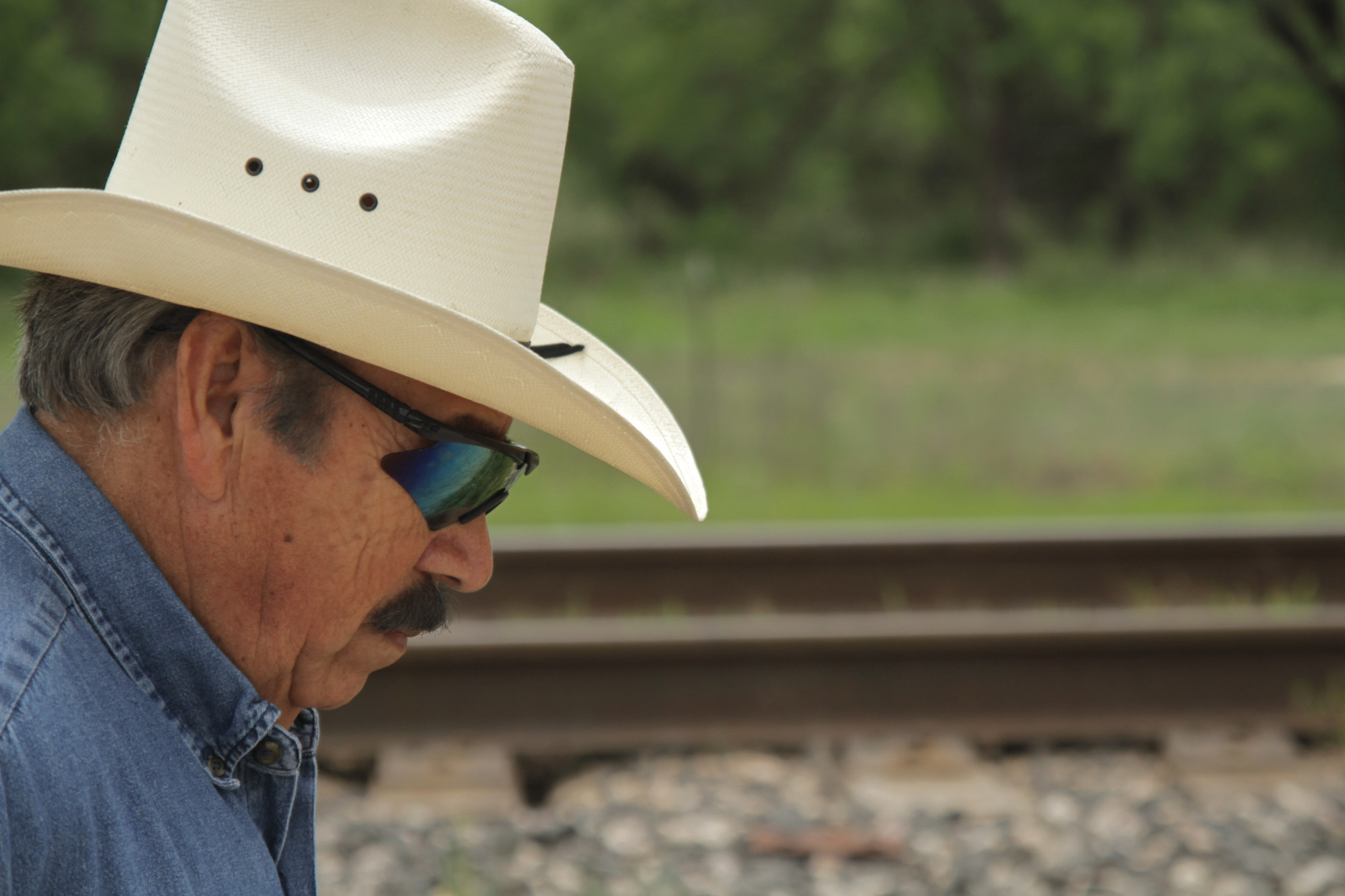
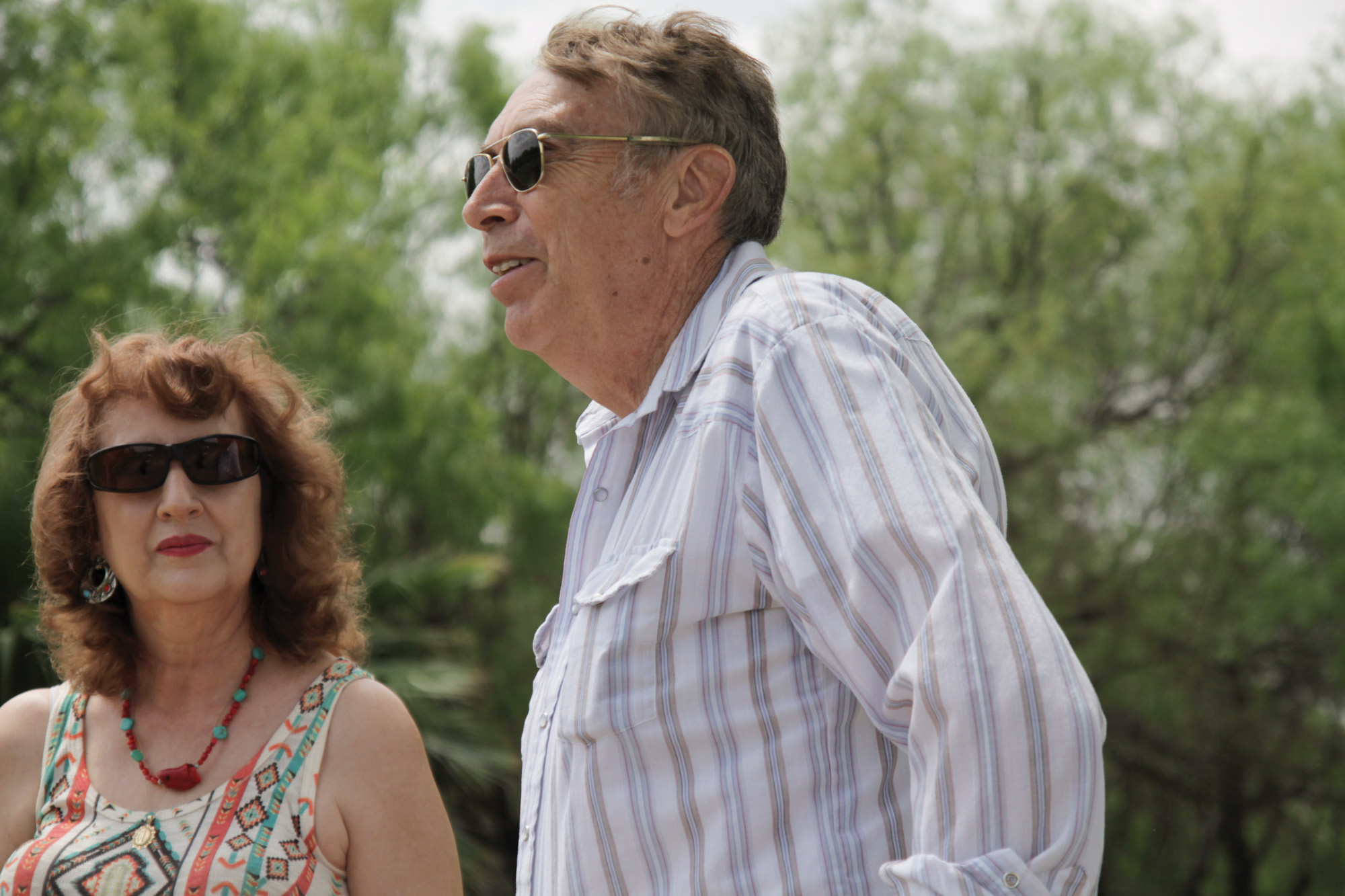
In the last half year, Dos Republicas has shipped 1 million tons of coal along the rail line that runs through downtown Eagle Pass to Piedras Negras. Martha Baxter sees the trains chug slowly through town, spilling coal along the way. On a visit to the outskirts of the mine in late April, she scanned the ground along the tracks for coal. She picked up a piece and cracked it open like a pomegranate, the black interior splintering into geometric shapes in her hands.
“They have totally ignored who we are and they’ve taken advantage of the things that they’ve found there. Whether they’re Carrizo or not, they’re still human remains that need to be dealt with.”

Since Dos Republicas started operations, the case made by activists has, if anything, gotten stronger. During last fall’s record floods, 9 inches of rain fell in Eagle Pass in two hours, inundating the waterways scattered throughout the minefields. “The water in Elm Creek and all the ponds surrounding Elm Creek turned black, like Coca-Cola,” Martha Baxter said. “It’s environmental injustice … and we’re collateral damage, basically.”
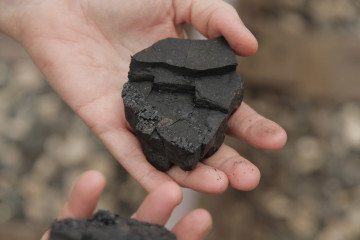
At least 150 dead fish were found floating in ponds and streams near the mine, and news reports said initial findings by the Texas Commission on Environmental Quality (TCEQ) indicated they died from lack of oxygen. The Baxters went out and collected some of the fish, storing them in their freezer as evidence. When an official from the Environmental Protection Agency (EPA) flew in from Washington, D.C. to conduct additional testing, the Baxters offered up their dead fish as samples for the analysis.
Martha Baxter says results from the EPA investigation have not been released. “We’ve yet to receive the report, mind you, months later,” she said.
The letters from the Railroad Commission to Mancias and his sister provided documentation of the site’s significance to indigenous people. Over the past four decades, the Texas Historical Commission has collected about 1,000 pages of documents on the Eagle Pass area. Much of the focus had been on what’s now the site of open-pit mining, near Elm Creek. “Like most places in Texas, there’s been habitation there for thousands of years, [in] one form or another,” said Chris Florance, spokesperson for the commission. “Most of our work had to do with human burial, evidence of [which is] down nearer to the creek.”
Typically, Native American gravesites are protected under the federal Native American Graves Protection and Repatriation Act, but it doesn’t extend to private property such as the Eagle Pass mine. Instead, Texas mandates that mining companies consult with agencies before breaking ground. In a 1991 memo, the Historical Commission and the Railroad Commission agreed that surface coal-mining applicants must “identify and evaluate” historical sites in a proposed mining area — including those with archaeological significance. Because of the agreement, the Historical Commission has been coordinating with Dos Republicas on a plan to avoid disturbing burial sites. “The mine is doing an archaeological excavation to survey the site and excavate it sensitively,” Florance said.
After years of fighting Texas agencies and Dos Republicas, Mancias has little faith in the official process. But federal and state recognition of the need to protect Native Americans’ legacy is a bargaining chip, and native organizer Jonathan Hook believes it can still be used effectively, if the right forces are mobilized.
A Cherokee citizen, Hook worked for six years as the director for environmental justice and tribal affairs at the EPA office in Dallas. He first visited Eagle Pass about a decade ago, when the Kickapoo tribal council asked him to look into what was happening with the mine. Back then, the Kickapoo didn’t believe Dos Republicas would actually open the mine, because it had been granted a mining permit years before but never started operating.
But by the time Hook moved to Maverick County in 2012, plans to open the mine were underway. “This town made a choice and no one’s listening to that decision,” Hook said. “It really does have a strong feeling of government against community and the community being truly voiceless at the state and government levels.”
Hook says that for native- and community-led opposition to industry to succeed, activists typically have to find a federal or state advocate. In Eagle Pass, state Senator Carlos Uresti, D-San Antonio, has sided with the community against the mine. Recruiting Texas Congressional members may be the next step. “People say, ‘Oh it’s too late, they’ve already started,’” Hook said. “Well, it’s never too late to stop something that’s destructive.”
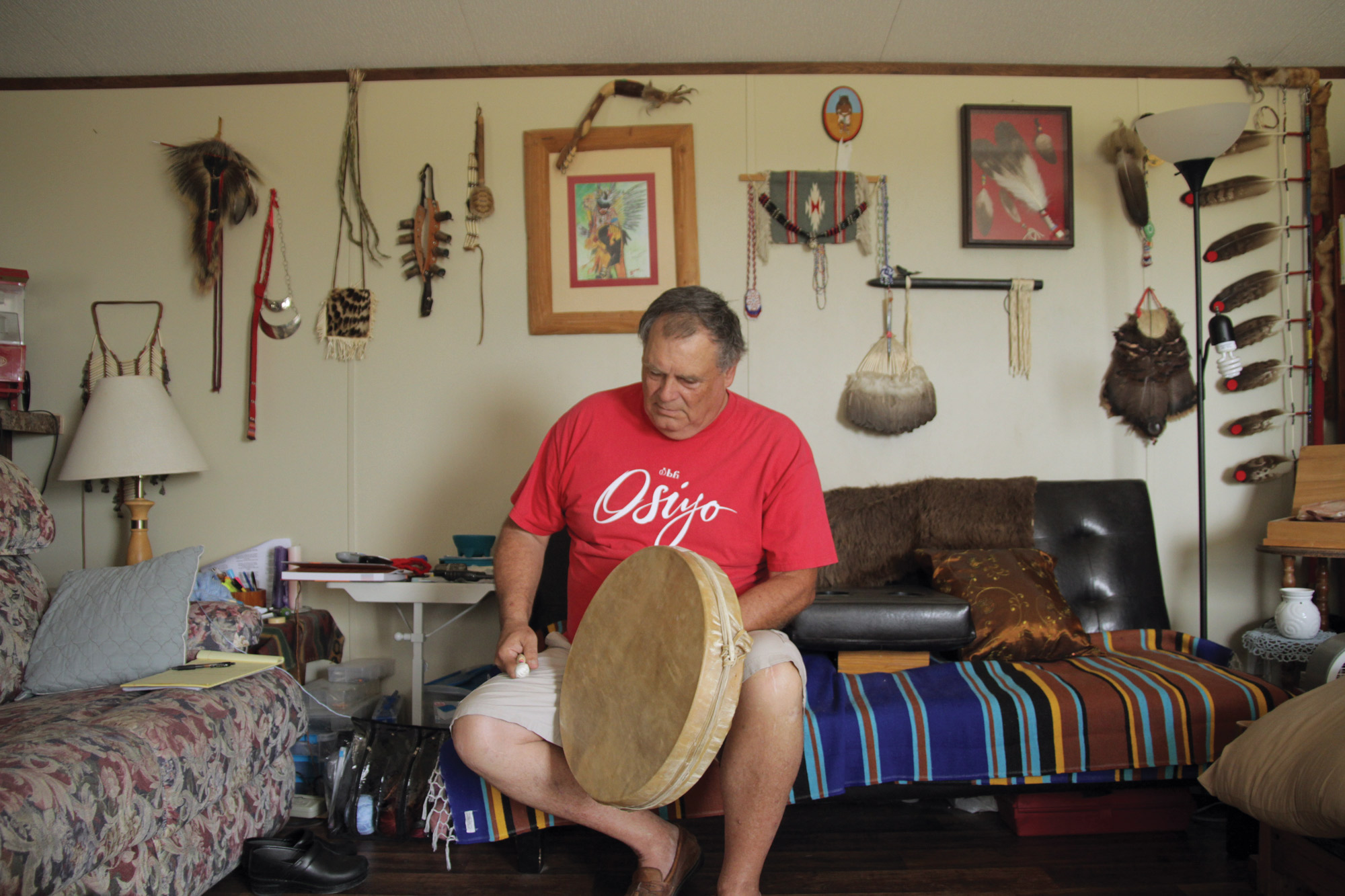
That is Mancias’ hope, as he continues to organize indigenous clans and tribes in Texas. As chairman of the Carrizo-Comecrudo Tribe of Texas and director of the Central Texas chapter of the American Indian Movement, Mancias has leaned on his network of native activists to recruit folks from other indigenous groups to stand in solidarity against the Eagle Pass mine.
“People say, ‘Oh it’s too late, they’ve already started.’ Well, it’s never too late to stop something that’s destructive.”
Maria Torres, a member of the Pacuache Band Coahuiltecan Nation, says she felt as light as a feather when she marched alongside Native Americans and their allies. “I felt so much weight go out of me, as an Indian,” she said. “They were supporting us. … It was an awakening. The protesters, they were the motivators, making us more strong as we were walking where our ancestors did.”
[Featured image of Dos Republicas protest by Kate Barton]


